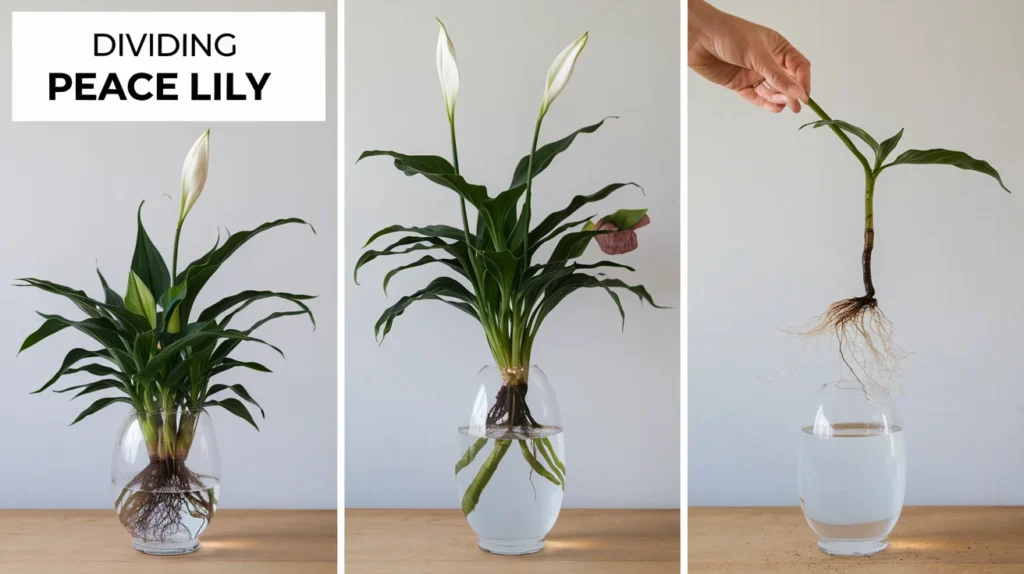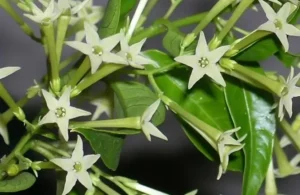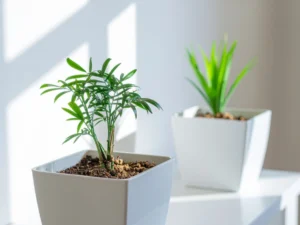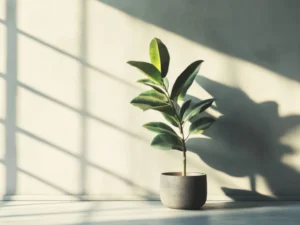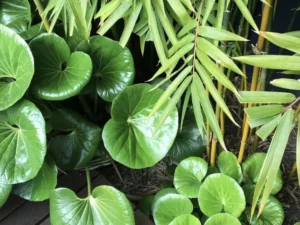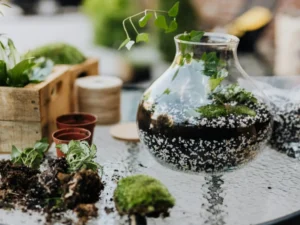Peace lilies are also known as Spathiphyllum and are adored for their beauty, requiring the least attention while improving air quality. As these plants grow, they become root-bound in their pots, prompting the need for division. Dividing peace lily not only refreshes the old peace lily but also leaves you with a few young peace lilies that you can place in different rooms in your house or give to friends. Today’s article focuses on the method of dividing peace lilies and provides you with relevant details to guarantee you have successful plant propagation.
Why and When to Divide a Peace Lily 🕰️🌿
Dividing a peace lily is an advantage when trying to control excess vegetative growth on a plant that has exceeded its container. Due to the roots or the sod being cramped when peace lilies are mature, it leads to declining growth because of poor aeration and less vigorous roots. You know that it is time for you to divide your peace lily when you see its roots growing through the drainage holes or when it appears that the plant does not thrive, although you are properly caring for it.
The best period for this process of repotting peace lilies is the spring or the early summer when the plant is in the growth period. This timing is the most appropriate so that the divisions have enough time to settle in their new pots before real growth efforts are put in during the winter season.
Preparing to Divide Peace Lily: What You’ll Need 🧑🌾🪴
Make sure you have got everything you need before you start the process of dividing the peace lily. So, what do you need?
A sharp, sterilized knife or garden shears: These play an important role in making a clean cut of the roots of the plant.
Fresh potting soil: The new divisions should be planted in a good-quality potting mix that allows for drainage to ensure they do not rot.
New pots: Slightly larger pots than the root ball of each division should be used. It is important that the pots also have drainage holes.
Watering can: Once the plants are divided and potted, you will have to give them quite a heavy watering.
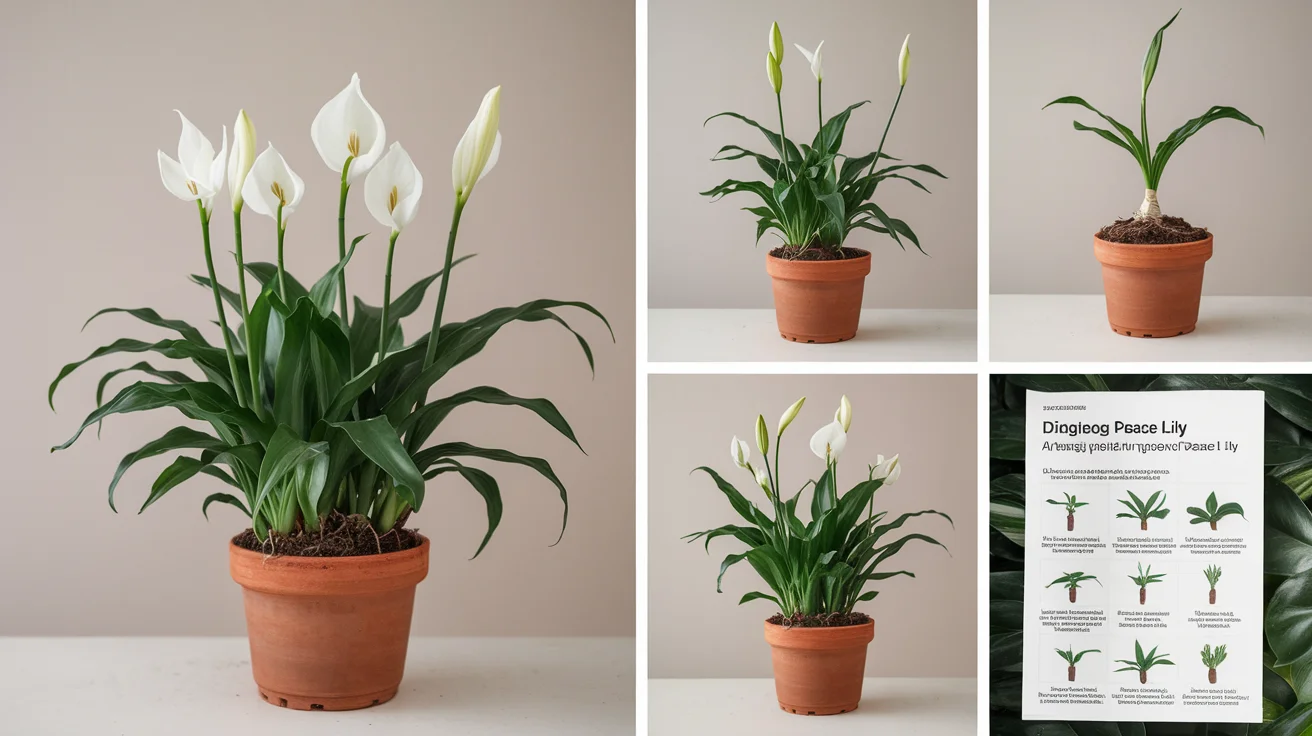
Step-by-Step Process for Dividing Peace Lily 🌱✂️
1. Prepare the plant for division. 🌿💧
Be sure to water the peace lily well before separating it into portions. This is an important way of preventing trauma to the plant as well as finishing the task of removing it from the pot more easily. It is preferable to allow about half an hour to pass after watering so as to let the soil become less firmly held.
2. Remove the Peace Lily from its pot. 🪴🚿
Lean the pot over and, as much as it is safe to do so, slide out the peace lily. Where the plant has been pot-bound, this may necessitate loosening the outer portions with either fingers or a small tool. During this period, special care is taken so as not to hurt the roots.
3. Separate the root ball. 🌿✂️
Never throw the plant away from the pot without examining the root ball. You will probably observe a few clusters of stems and branches of roots, and they can give birth to new plants. With your hands or sharp knives, pull the root ball apart into smaller heads or clumps. Each clump must have a minimum of two to three stems with a reasonable balance of roots.
4. Trim and prune as required ✂️🍃
For everyone who is in the habit of cutting dead and damaged roots and dead or unhealthy leaves, it is necessary to do so before replanting the divisions. This means the plant can concentrate its resources on developing new foliage. In case your peace lily features blooms, it might be a good idea to pinch them off for this time so that the peace lily will not have to sustain blooms that need a lot of energy.
5. Repot the Divisions 🌱🪴
Make sure to put some fresh potting soil in the new pots, and in the middle of each pot, make a small hole for each division. Place the divided peace lily in the pot, ensuring all of the roots are adequately spread and covered with soil. The crown of the plant (the part of the plant where the stems meet the roots) should be level with the soil. Pack the soil down moderately to prevent air gaps only around the head of the plant and not excessively.
6. Water thoroughly. 💧🌾
Thoroughly water further pieces independent of repotting leaves of peace lily sections and drain out from the bottom pot after mesh ca, but water drips from the bottom of the pot. The set of plants can be utilized on repotting plants in first watering. Maintain average moisture content in the soil after the division and rooting of stems and leaves to avoid the sinking of roots into the medium positions.
Caring for Newly Divided Peace Lilies 🌱🌤️
While there are many benefits to the division, it can be a challenging process for the plant so proper care afterwards is very important to ensure the division is successful. Here are some tips to help your new peace lilies establish satisfactorily:
1. Place in Indirect Light 🌤️🌿
They do best in bright, filtered light. After separating the peace lilies, the new plants that are given are also required to be placed in a well-lit area but without direct sunlight. Do not keep them in bright light since this can burn the leaves and cause a lot of stress to the plant.
2. Maintain Humidity 💧🌡️
Peace lily (Spathiphyllum) does well in areas with humidity; this explains why people place them in their houses. If the climate is dry, you can also try putting a humidifier around the plants or soaking the pots in a flat tray filled with water and pebbles. This extra humidity can assist the separated stems in recuperating and yield new shoots.
3. Fertilize lightly. 🌿🧑🌾
Peace lilies should be initially left unfed until they show signs of new growth; thereafter, you may fertilize them sparingly. Water-soluble balanced fertilizer should be applied at half of the recommended strength every 6-8 weeks in the growing season. Do not overfeed, for this may cause the roots of the plant to be compromised.
Benefits of Dividing Peace Lily: Why You Should Do It 🌿🌱

The division of peace lily is not only necessary due to the overgrowth of the plant, but it also bears so many advantages that make it worthwhile:
1. Healthier Plants 🌿💚
By division of peace lily, you are also giving the mother plant space to grow, which might end up being actively growing. The divisions also start afresh in new soils where they are sure they will not come across the bad bugs or the nasty diseases that might live in the old pot.
2. Propagation 🌱🌿
One of the easiest ways to propagate your plant is by dividing the peace lily, so you are able to increase your plant collection or even save it as a gift for your friends and family. It is an inexpensive way to make your house greener without buying more plants.
3. Renewed Blooms 🌸🌿
It is common for peace lily plants to reduce the frequency of seed production with age. When the peace lily is divided, it produces more shoots, which means flowering will be sooner than if the peace lily has not been divided. With this cleanse and rectification cycle, your peace lily will soon regain its former beauty and become covered with stunning flowers once more.
Conclusion:
Dividing a peace lily is an activity that is quite easy to do and provides great rewards for growers in terms of plant health and propagation. Following the procedures in this guide will allow you to divide your peace lily without harming it and ensure by all means it grows even better with the years passing.
It is important to note that most failures in the division of peace lilies are attributed to a lack of patience or rough handling of the clumps that are being separated. Within a few weeks of good planting, expect your new plants to root and give you another set of splendid peace lilies for use or to pass on.

